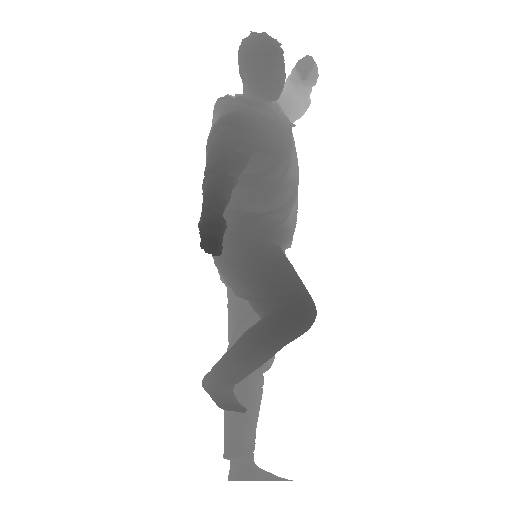ICON: Implicit Clothed humans Obtained from Normals
arXiv, December 2021.
Yuliang Xiu · Jinlong Yang · Dimitrios Tzionas · Michael J. Black
Table of Contents
Who needs ICON?
- If you want to reconstruct 3D clothed humans in unconstrained poses from in-the-wild images
- together with the body under clothing (e.g. SMPL, SMPL-X)
- clothed-body normal maps (front/back) predicted from images
| ICON's outputs from single RGB image |
- If you want to obtain a realistic and animatable 3D clothed avatar direclty from video / a sequence of monocular images
- fully-textured with per-vertex color
- could be animated by SMPL pose parameters
- with pose-dependent clothing deformation
| 3D Clothed Avatar, created from 400+ images using ICON+SCANimate, animated by AIST++ |
More Qualitative Results
Introduction Video
ICON.mp4
Citation
@misc{xiu2021icon,
title={ICON: Implicit Clothed humans Obtained from Normals},
author={Yuliang Xiu and Jinlong Yang and Dimitrios Tzionas and Michael J. Black},
year={2021},
eprint={2112.09127},
archivePrefix={arXiv},
primaryClass={cs.CV}
}
Acknowledgments
We thank Yao Feng, Soubhik Sanyal, Qianli Ma, Hongwei Yi, Chun-Hao Paul Huang, Weiyang Liu, and Xu Chen for their feedback and discussions, Tsvetelina Alexiadis for her help with the AMT perceptual study, Taylor McConnell for her voice over, and Yuanlu Xu's help in comparing with ARCH and ARCH++.
Here are some great resources we benefit from:
- MonoPortDataset for Data Processing
- PaMIR, PIFu, PIFuHD, and MonoPort for Benchmark
- SCANimate and AIST++ for Animation
- rembg for Human Segmentation
- torch-mesh-isect for BVH Computation
- smplx, PARE, PyMAF, and PIXIE for Human Pose & Shape Estimation
- CAPE and THuman for Dataset
- PyTorch3D for Differential Rendering
Some images used in the qualitative examples come from pinterest.com.
This project has received funding from the European Union’s Horizon 2020 research and innovation programme under the Marie Skłodowska-Curie grant agreement No.860768 (CLIPE Project).
Disclosure
MJB has received research gift funds from Adobe, Intel, Nvidia, Facebook, and Amazon. While MJB is a part-time employee of Amazon, his research was performed solely at, and funded solely by, Max Planck. MJB has financial interests in Amazon, Datagen Technologies, and Meshcapade GmbH.
Contact
For more questions, please contact [email protected]











 The evaluation results shows that NC is very low, but chamfer and p2s are very high.
The evaluation results shows that NC is very low, but chamfer and p2s are very high.
 Do you know where the problem is? I would appreciate it a lot if you could give me some suggestions!
Do you know where the problem is? I would appreciate it a lot if you could give me some suggestions! I tried to see the coordinate transformation in the code, it seems that I can get
I tried to see the coordinate transformation in the code, it seems that I can get